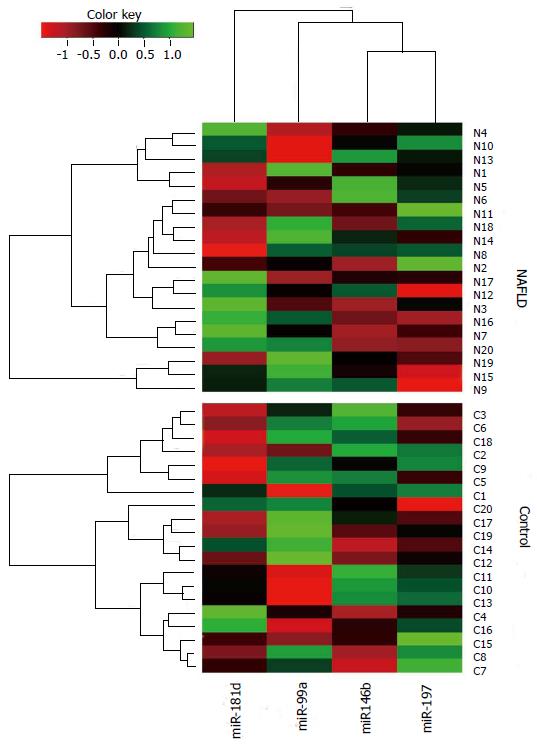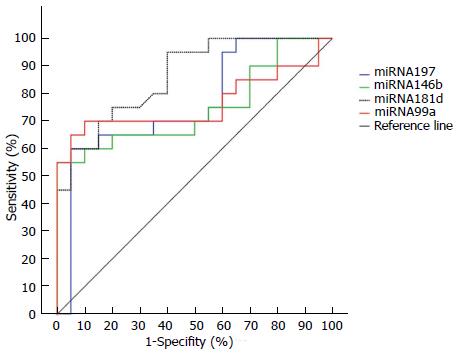Copyright
©2014 Baishideng Publishing Group Inc.
World J Hepatol. Aug 27, 2014; 6(8): 613-620
Published online Aug 27, 2014. doi: 10.4254/wjh.v6.i8.613
Published online Aug 27, 2014. doi: 10.4254/wjh.v6.i8.613
Figure 1 Box plots showing the expression value of 8 genes between control and non-alcoholic fatty liver disease groups.
The middle line indicates the median statistic, the bottom and top of the box show the 25th and 75th percentiles, the lower and upper whiskers show the minimum and maximum values of the data after detecting outliers (circles). P values were obtained from a two-sided t test and adjusted with false discovery rate. NAFLD: Non-alcoholic fatty liver disease.
Figure 2 A cluster heatmap displaying the data values of samples and differentially expressed miRNAs simultaneously in a hierarchical cluster structure.
Bright red: Under-expression; black: No change; bright green: Over-expression.
Figure 3 Comparison of area under receiver operating characteristic curve values of miR-197, mir-146b, mir-181d and mir-99a miRNA’s in the detection of non-alcoholic fatty liver disease.
Area under receiver operating characteristic values were 0.77 (0.60-0.88), 0.75 (0.59-0.87), 0.86 (0.72-0.95), and 0.76 (0.60-0.88), respectively, and there was no statistically significant difference between any two miRNAs (P > 0.05).
- Citation: Celikbilek M, Baskol M, Taheri S, Deniz K, Dogan S, Zararsiz G, Gursoy S, Guven K, Ozbakır O, Dundar M, Yucesoy M. Circulating microRNAs in patients with non-alcoholic fatty liver disease. World J Hepatol 2014; 6(8): 613-620
- URL: https://www.wjgnet.com/1948-5182/full/v6/i8/613.htm
- DOI: https://dx.doi.org/10.4254/wjh.v6.i8.613















